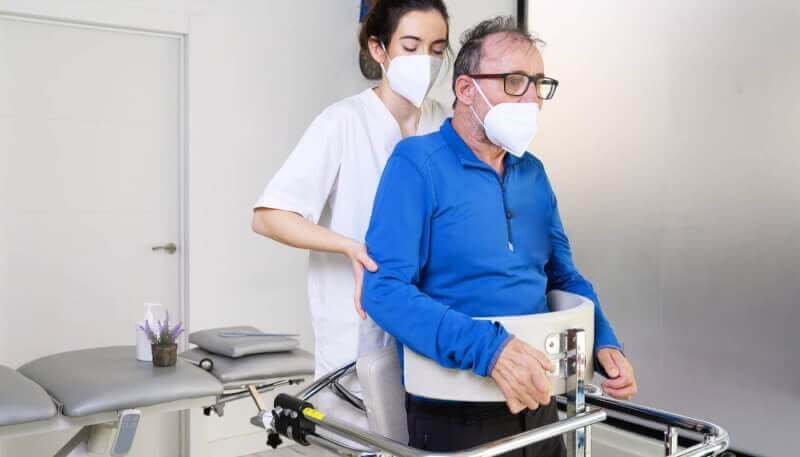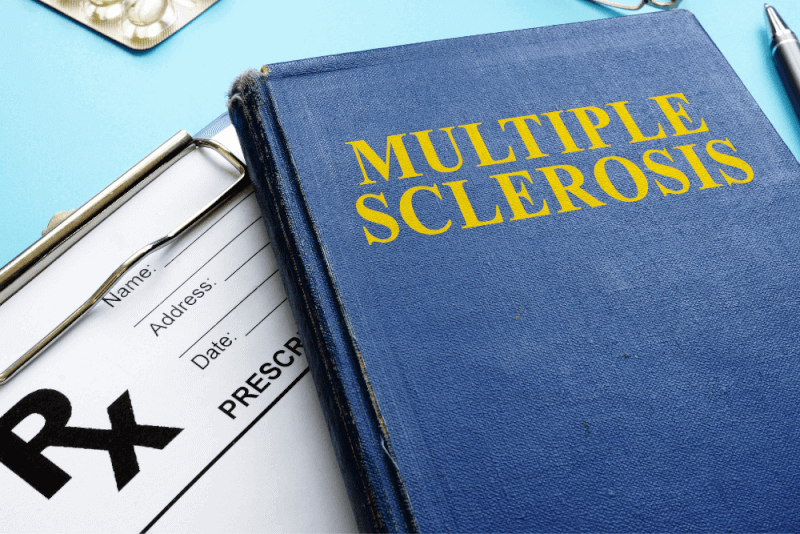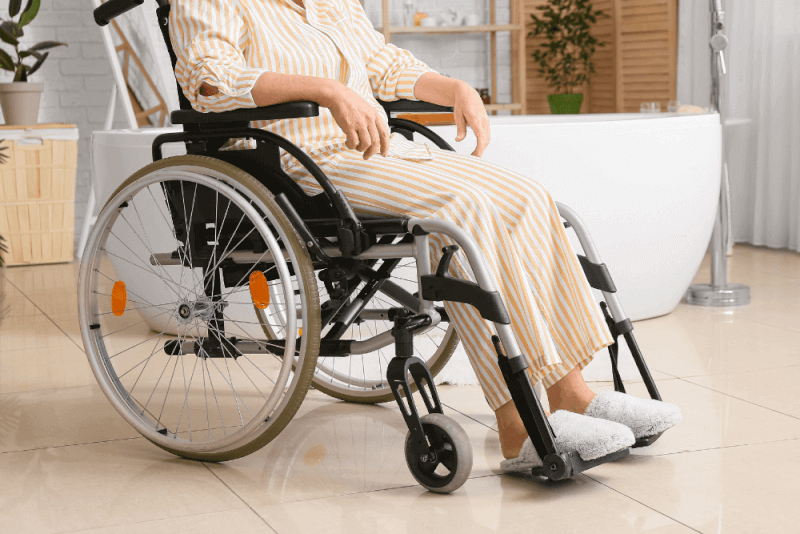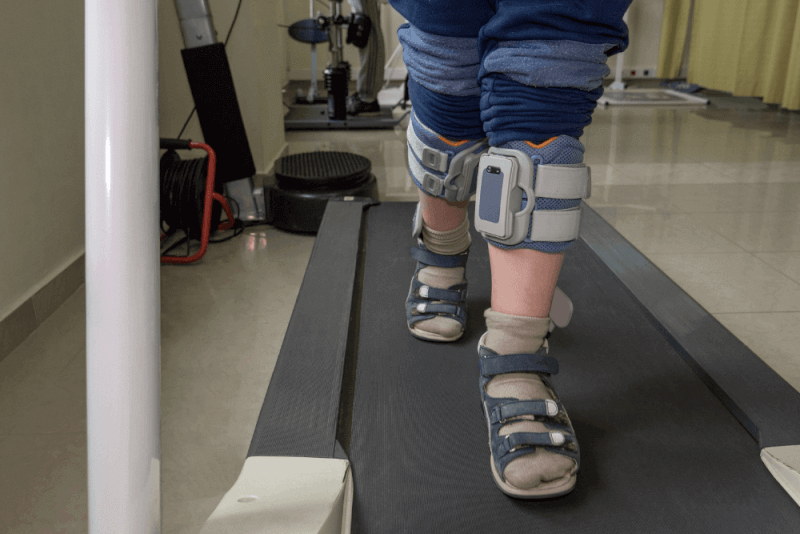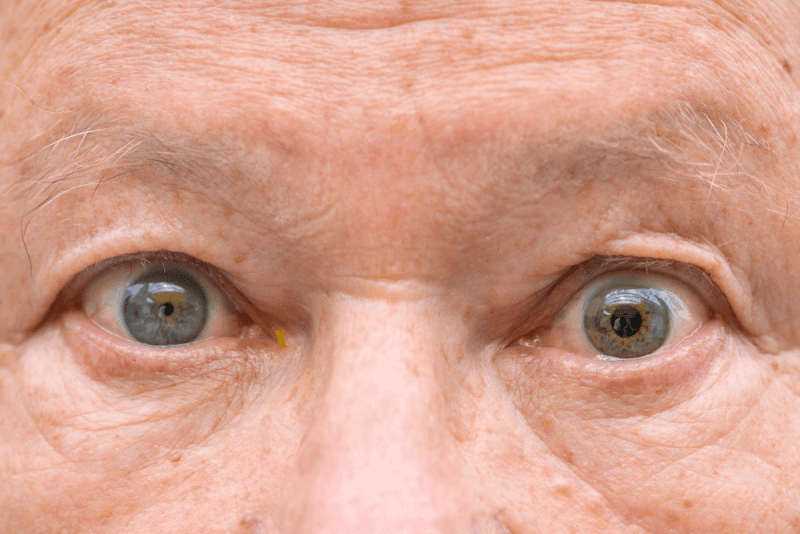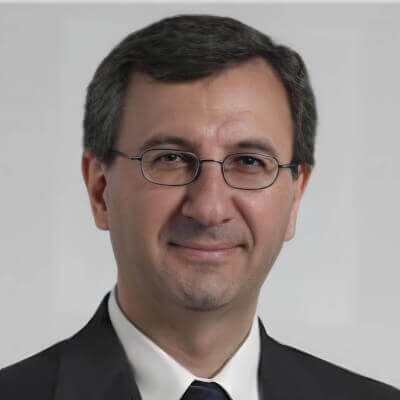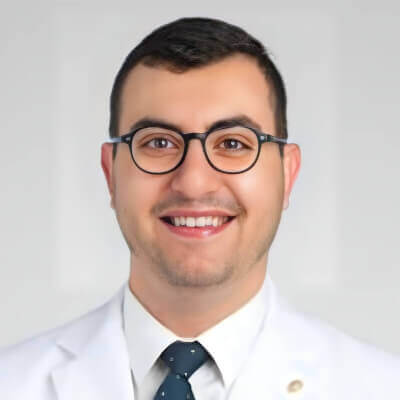What is ALS (Amyotrophic Lateral Sclerosis)?
We have nerve cells that allow us to move our muscles voluntarily. When these nerve cells are damaged, a rare neurological disease called amyotrophic lateral sclerosis, or ALS, develops. ALS is a progressive disease by nature, and it also shows attacks in some periods. Unfortunately, there is no treatment option for ALS in today's medicine. Research on ALS is ongoing and measures can be taken to slow down the disease.
ALS Disease Symptoms
The first symptoms of ALS vary from person to person. In some patients, the first symptoms appear in the muscles of the hand, while in others they may appear in the muscles of the tongue. For example, some patients initially have difficulty holding a coffee cup or a pen, while others begin to have difficulty speaking.
The rate of progression of ALS, which typically progresses gradually, varies between patients. In general, the survival time of ALS patients varies between 3 and 5 years, with some patients living for over 10 years.
The most common symptoms of ALS are as follows:
- Difficulty holding the head upright,
- Muscle cramps
- Stiffening of the muscles,
- Swallowing difficulties and problems,
- Speech impairment,
- Difficulty carrying things,
- Stumbling or falling while walking,
Muscle involvement in ALS patients occurs at different stages. The disease, which affects one hand or leg at the beginning of the disease, affects all voluntary muscles in later stages. On the other hand, some organs, such as the bladder and heart, are not affected by this disease.
Symptoms of ALS in the later stages include increased chewing and swallowing problems, decreased muscle mass and severe weakness in the muscles.
Causes of ALS Disease
The cause of ALS is not known exactly. However, it is known that between 5% and 10% of patients inherit the disease from their parents. In the remaining patients, the cause of ALS is unknown.
Options that can cause ALS include a gene mutation. Various gene mutations seen in patients may be among the causes of non-hereditary ALS. People with ALS due to a gene mutation have almost the same symptoms as non-hereditary forms.
Another difference that distinguishes ALS patients from other people is the chemical imbalance in the brain. Studies in these patients have shown higher levels of a chemical called glutamate, which functions to carry chemical messages in the brain. Excess glutamate has been shown to cause damage to nerve cells.
Another factor that can cause ALS is a dysregulated immune response. If a person's immune system attacks the body's normal cells due to an imbalance, it can also cause the death of nerve cells. This leads to the development of ALS.
Another factor thought to cause ALS is the abnormal accumulation of proteins in the body. Some types of protein accumulate inside nerve cells and damage them.
ALS Diagnosis Methods
ALS patients have difficulty getting a diagnosis in the early stages of the disease. This is because the initial symptoms of ALS are similar to those of other neurological diseases. In order to accurately identify ALS, which can mimic other neurological diseases, specialists will help you with the following diagnostic methods:
- Goose biopsy
- Lumbar puncture, a procedure in which a needle is inserted into the patient's lower back to remove fluid from the spinal cord,
- Blood tests
- Urine tests
- Magnetic resonance imaging,
- Nerve conduction study,
- Electromyogram
ALS Treatment Methods
There is no treatment for the damage caused by ALS. However, many different methods can be used in combination to improve quality of life, make patients more independent and slow the progression of the disease. These treatment methods also prolong the survival of patients. In the treatment of her disease, she uses methods such as medical drugs, speech therapy, physical therapy, nutritional supplements, social and psychological support therapies.
Medical Drugs
Two different medicines are used to treat ALS. Both drugs are FDA-approved and have different mechanisms of action. One of these drugs works by reducing high levels of a chemical called glutamate in the brains of patients and is taken orally.
Another medicine used in the treatment of ALS is a medicine called Edaravon. This medicine, which is given intravenously, has serious side effects.
In addition to the medicines mentioned above, patients may also be given medicines to relieve some of their symptoms. These include medicines to reduce muscle cramps, relieve constipation, prevent sleep problems and depression.
Physical Therapy and Rehabilitation
Over time, the voluntary muscles of ALS patients lose their characteristics. Physical therapy and rehabilitation are used to slow this down. It is used to alleviate and slow down symptoms such as cramps, muscle stiffness and fluid retention. Through physical therapy and rehabilitation, the immobility of patients' joints is prevented and patients can continue to perform their daily tasks.
Nutrition Support
One of the most common symptoms is difficulty in chewing and swallowing. For this reason, it is not always possible for ALS patients to eat a balanced and adequate diet. In order to prevent this, nutritional support should be sought. With this support, a nutrition program is created for the patients and they are provided with easy-to-swallow foods and better nutrition.
Foods that are good for ALS
For ALS patients, nutrition plays a key role in both the treatment and progression of the disease. Patients are especially recommended to consume fruits and vegetables rich in antioxidants and carotene, as well as cereals with high fiber content.
It is inevitable for ALS patients to lose weight. However, patients should consume the nutrients they need on a daily basis to prevent excess weight gain. In addition, the points to be considered to prevent excessive weight loss in patients include the following.
- Prolonged fasting should be avoided.
- Foods with high nutritional values should be consumed.
- Avoid drinking fluids before and during meals to delay the feeling of fullness.
- Foods high in calories should be preferred.
- Foods that patients enjoy eating need to be around them.
- A meal plan should be prepared and strictly followed.
- It is recommended to encourage the patient to eat with others.
- The patient's menu needs to be changed regularly.
- In addition, supplements that provide additional protein and calories can be used to prevent weight loss in patients.
- The use of folic acid, L-cartin, vitamin E and B12 supplements will also help prevent weight loss in ALS patients.
In addition, there are also foods that ALS patients should not consume. These foods include the following.
- Milk
- Pork
- Consuming meat for lunch
- Alcohol
Speech Therapy
Since ALS affects the muscles that are necessary for patients to speak, over time their speech deteriorates and they become unable to communicate with other people. With speech therapy, the muscles that patients use to speak are strengthened. In this way, patients can maintain their ability to speak for a longer period of time. Another advantage of speech therapy is that it is also advantageous for swallowing difficulties. In cases where patients cannot speak, non-verbal communication techniques are taught to patients.
Adaptation Therapy
Since ALS is a progressive disease, medical devices are used to help with the functions that the disease loses over time. These include devices to support daily activities such as eating, dressing, bathing and toileting, as well as devices such as wheelchairs, continuous positive airway pressure to help breathing during sleep and air mattresses. Over time, as patients lose the ability to speak, speech assistive devices and computers with eye recognition are used to help patients communicate.
Patients also need machines to protect the lungs in the later stages of the disease. When patients lose functions such as swallowing and chewing, they need to be fed through a feeding tube.
Psychological and Social Support
People with ALS can carry out daily tasks on their own until the last stage of the disease. However, as muscle wasting accelerates in advanced stages, patients become unable to use their arms, speak or walk. Despite these physical changes, patients' minds and memories are not affected by the disease. For this reason, it is very important to provide psychological and social support to patients on an ongoing and regular basis. The key point in this support process is the compassionate, patient and attentive behavior of the patient's relatives. Thanks to the psychological and social support provided to ALS patients, they feel well and live their lives comfortably.
ALS Stages
ALS is mainly divided into familial and sporadic. Between 90% and 95% of cases are sporadic. For this reason, the majority of patients do not have a family history. In addition, the cause of sporadic cases is unknown. ALS is divided into different classes.
In the classical ALS, there is a deterioration of the upper and lower motor nerve cells. Classical ALS, which accounts for approximately 1/3 of all ALS patients, is a progressive neurological disease.
Another class, called Primary Lateral Sclerosis, affects the upper motor nerve cells. In addition to its progressive nature, if the lower motor neurons are not affected within 2 years, it usually remains a disease affecting the upper motor neurons. It is also the least common class of ALS cases.
The Progressive Bulbar Paralysis (PBP) class is a class that affects lower motor neurons. For this reason, it starts with difficulty chewing, speaking and swallowing. This class accounts for approximately ¼ of ALS patients.
Progressive Muscular Atrophy (PMA) is a class in which lower motor neurons deteriorate. In this class, if the upper motor nerves are not affected within two years, it will progress to pure lower neuron disease.
Familial ALS affects more than one member of the same family. It is progressive and accounts for between 5% and 10% of total ALS cases.
First Stages of ALS
In the early stages of ALS, movements are primarily affected. This is due to the loss of neurons in the spinal cord and brain stem. The first symptoms seen at this stage include the following.
- Muscle weakness
- Muscle twitching
- Muscle thinning
- Difficulty with fine motor movements such as turning a key
- Difficulty swallowing
- Speech impairment
ALS End Stage
In the last stage of ALS, patients can become bedridden. Because in the last stage, patients have serious muscle wasting. These melts prevent patients from walking and cause them to have speech difficulties and not be able to use their arms. In the last stage, patients are not only bedridden but also need respiratory support.
In addition, in advanced stages of ALS, patients cannot control their bowel and bladder. Symptoms become much more pronounced in patients with end-stage ALS, although the heart muscles and eye muscles are not damaged either. The symptoms seen in patients are as follows.
- Paralysis
- Difficulty swallowing
- Inability to breathe
- Difficult to understand speech
- Difficulty in writing
- Inability to hold objects
- Stumbling
- Falling
- Difficulty walking
- Chronic fatigue
- Loss of control in arms and hands
- Weight loss
- Weakness
- Muscle twitching and cramps


